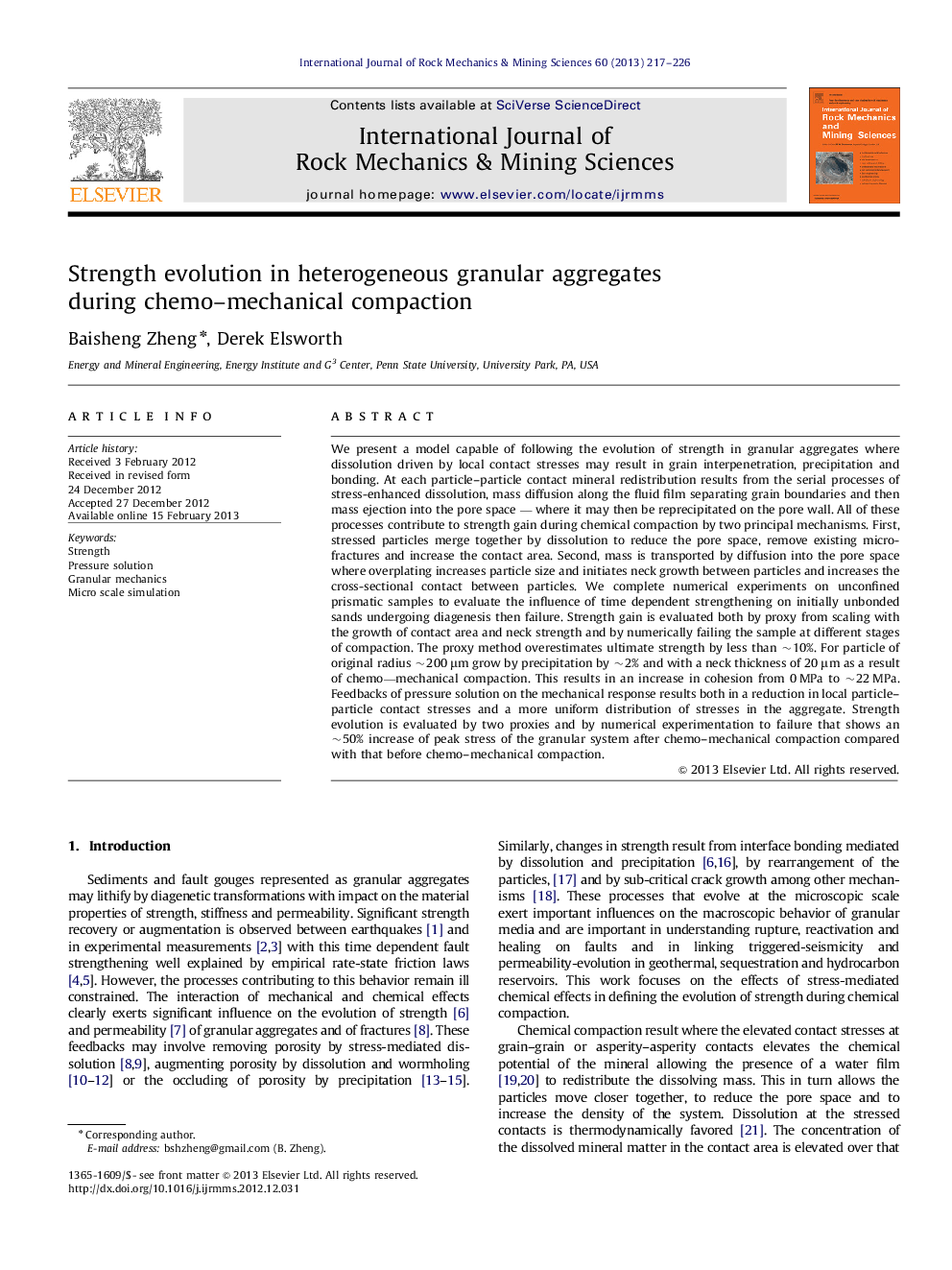| Article ID | Journal | Published Year | Pages | File Type |
|---|---|---|---|---|
| 809284 | International Journal of Rock Mechanics and Mining Sciences | 2013 | 10 Pages |
We present a model capable of following the evolution of strength in granular aggregates where dissolution driven by local contact stresses may result in grain interpenetration, precipitation and bonding. At each particle–particle contact mineral redistribution results from the serial processes of stress-enhanced dissolution, mass diffusion along the fluid film separating grain boundaries and then mass ejection into the pore space — where it may then be reprecipitated on the pore wall. All of these processes contribute to strength gain during chemical compaction by two principal mechanisms. First, stressed particles merge together by dissolution to reduce the pore space, remove existing micro-fractures and increase the contact area. Second, mass is transported by diffusion into the pore space where overplating increases particle size and initiates neck growth between particles and increases the cross-sectional contact between particles. We complete numerical experiments on unconfined prismatic samples to evaluate the influence of time dependent strengthening on initially unbonded sands undergoing diagenesis then failure. Strength gain is evaluated both by proxy from scaling with the growth of contact area and neck strength and by numerically failing the sample at different stages of compaction. The proxy method overestimates ultimate strength by less than ∼10%. For particle of original radius ∼200 μm grow by precipitation by ∼2% and with a neck thickness of 20 μm as a result of chemo—mechanical compaction. This results in an increase in cohesion from 0 MPa to ∼22 MPa. Feedbacks of pressure solution on the mechanical response results both in a reduction in local particle–particle contact stresses and a more uniform distribution of stresses in the aggregate. Strength evolution is evaluated by two proxies and by numerical experimentation to failure that shows an ∼50% increase of peak stress of the granular system after chemo–mechanical compaction compared with that before chemo–mechanical compaction.
► Pressure solution is coupled to strength gain in heterogeneous granular aggregates. ► Mass redistribution increases contact area, coordination number and neck growth. ► Mass redistribution strengthens the granular aggregate. ► Stress-mediated dissolution reduces contact stresses and increasing strength. ► Stress-mediated dissolution reduces the heterogeneity of the force chains.
